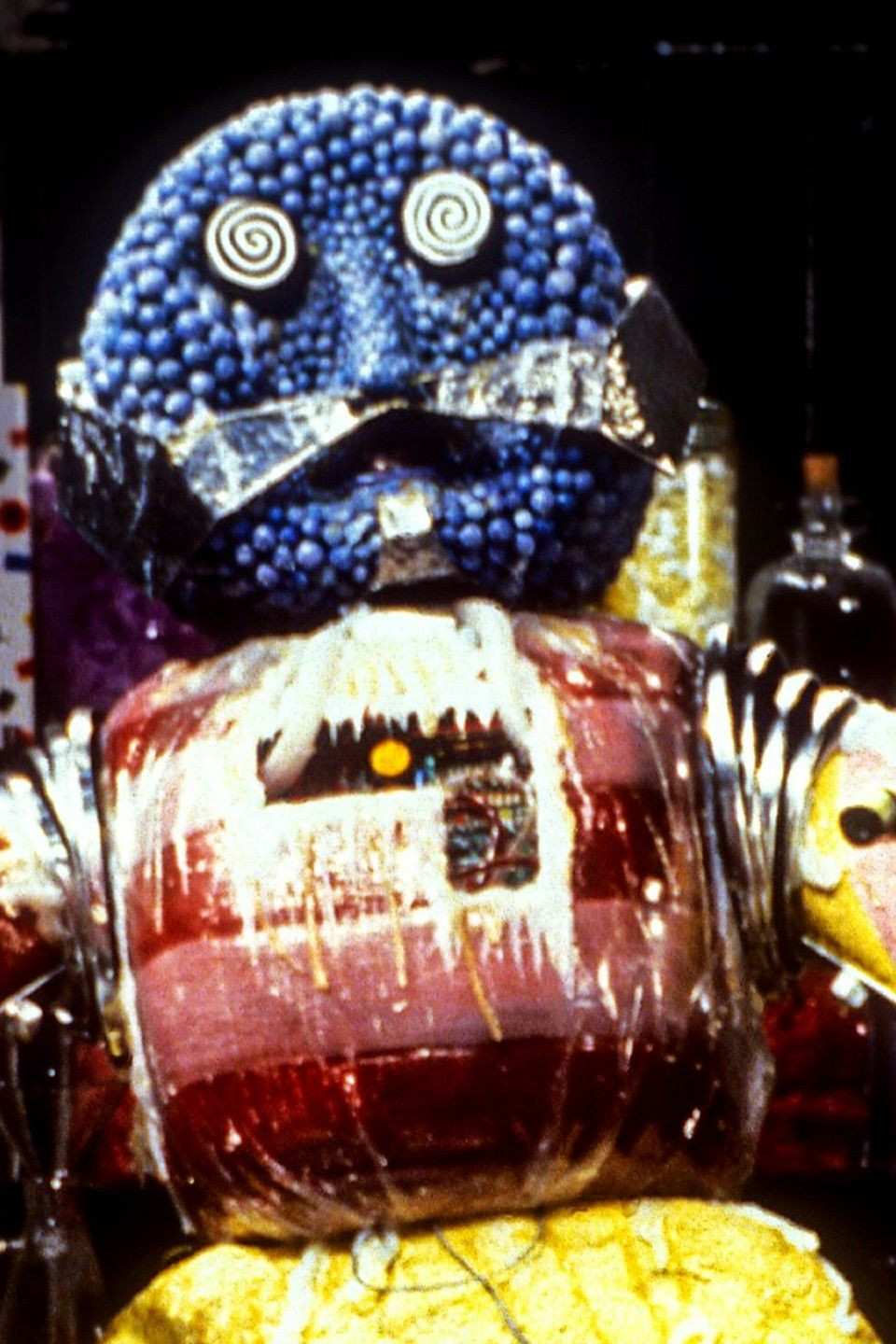Often, casual viewers believe that fan service moments, callbacks to previous episodes, or retrospective storytelling are elements exclusive to Doctor Who specials or multi-Doctor stories. However, the later seasons of classic Doctor Who, particularly those featuring the Seventh Doctor, Sylvester McCoy, deftly incorporated these elements. Season 25, the focus of this review, stands as a prime example. Unlike modern Doctor Who, these references aren’t heavily signposted; they are woven subtly into the narrative, laying groundwork for future storylines – some of which, sadly, were never realized due to the show’s initial cancellation.
The brilliance of this season lies in its accessibility. Each story functions effectively as a standalone adventure. Viewers can enjoy each episode without needing extensive prior knowledge of Doctor Who lore. Season 25 offers engaging narratives that are rewarding for both new viewers and long-time fans who appreciate the deeper layers of continuity.
Remembrance of the Daleks – Written by Ben Aaronvitch
The season opens dramatically above Earth, with the resonant voice of John F. Kennedy’s speech drifting through the airwaves as a Dalek spaceship ominously approaches. We are immediately grounded in 1963, at Coal Hill School – a location steeped in Doctor Who history. A young girl, dressed somewhat anachronistically and carrying a ghetto blaster, catches the eye of the newly arrived Doctor and Ace. The Doctor, ever observant, is more intrigued by a nearby blue transit van bristling with radio antennae. Sending Ace for refreshments, he begins his investigation, noticing unusual markings on the playground. This leads him to Rachel, a woman inside the van who, despite her initial suspicion, quickly becomes embroiled in the unfolding events as a “group captain” comes under attack. This introduction cleverly sets the stage for the Counter-Measures team, a group intrinsically linked to this era of Doctor Who.
Review: “Remembrance of the Daleks” is a masterclass in self-aware storytelling, deeply rooted in Doctor Who’s origins. While modern iterations of the show often explicitly highlight their self-references, this story operates with a more understated approach. At its core, it’s a thrilling narrative set in 1963, where the Seventh Doctor expertly manipulates two warring Dalek factions. Ace’s journey in this story is particularly compelling as she confronts the complexities of history and learns that moral clarity isn’t always straightforward.
For viewers unfamiliar with Doctor Who’s extensive history, “Remembrance” works perfectly as a standalone Dalek adventure. However, for those with a deeper knowledge, the return to Coal Hill School, the birthplace of Doctor Who, and the subtle nods to the show’s past enrich the viewing experience. Crucially, this story also marked a significant moment for the Daleks themselves: viewers witnessed, perhaps for the first time for many, that Daleks could ascend stairs, shattering a long-held and somewhat humorous limitation.
 The Seventh Doctor and Ace stand in the playground of Coal Hill School, investigating strange markings.
The Seventh Doctor and Ace stand in the playground of Coal Hill School, investigating strange markings.
The Happiness Patrol – Written by Graeme Curry
A stark shift in tone and setting introduces “The Happiness Patrol.” We are immersed in the night-time cityscape of Terra Alpha, a human colony where enforced happiness reigns supreme. A woman, clearly struggling with deep unhappiness, sits despondently on a bench, a state deemed criminal in this oppressive society. A seemingly kind gentleman approaches, offering her company, but reveals himself to be an undercover policeman, highlighting the pervasive surveillance and control.
Meanwhile, the TARDIS materializes nearby, and the Seventh Doctor and Ace emerge, discussing dinosaurs – a classic Doctor Who juxtaposition of the mundane and the extraordinary. The Doctor, sensing something amiss on Terra Alpha, embarks with Ace to uncover the truth behind the colony’s unsettlingly cheerful facade.
Review: “The Happiness Patrol” is often remembered for its whimsical villain, the Kandy Man, a creature composed of sweets. While this element might initially seem geared towards a younger audience, the story delves into far more sophisticated themes. The true “monster” of this narrative isn’t the Kandy Man but the human authority figure, Helen A, whose regime enforces superficial happiness through fear and repression.
This story is rich in clever wordplay and subtle social commentary. Music plays a vital role, particularly when the Doctor and Ace encounter the marginalized inhabitants living in the colony’s underbelly. A distinct film noir atmosphere pervades the narrative, despite the overtly satirical portrayal of Helen A, who is widely interpreted as a thinly veiled caricature of then-British Prime Minister Margaret Thatcher. The Seventh Doctor’s approach here is particularly nuanced, blending his characteristic wit with a steely determination to dismantle injustice.
 The Seventh Doctor and Ace explore the brightly colored, yet oppressive, city streets of Terra Alpha.
The Seventh Doctor and Ace explore the brightly colored, yet oppressive, city streets of Terra Alpha.
Silver Nemesis – Written by Kevin Clarke
“Silver Nemesis” unfolds across multiple timelines, commencing in South America in 1988 and England in 1638. In 1988, a group of soldiers led by a former Nazi are tracking the arrival of an unknown object using computer technology. The Nazi leader is also captivated by a silver bow, an object of significant power. Simultaneously, in 1638 England, a noblewoman and her servant are practicing archery with poisoned arrows, also aware of the impending arrival of the mysterious object and possessing a rudimentary form of time travel to reach its landing site.
Juxtaposing these historical threads, we find the Seventh Doctor and Ace enjoying a peaceful afternoon listening to jazz. However, the Doctor’s tranquility is shattered when his pocket watch alarm sounds, signaling an impending threat to Earth. Realizing the planet is in danger, the Doctor swiftly formulates a plan, aiming to locate both the noblewoman and the landing site of the enigmatic object before the Nazi group can claim it.
Review: Despite being only Ace’s fourth televised adventure with the Seventh Doctor, “Silver Nemesis” creates the impression of a much deeper, ongoing narrative. The story cleverly employs time-jumping, initially disorienting the viewer but ultimately enriching the sense of a vast, interconnected universe. The Doctor and Ace’s temporal excursions, including visits to 1638 and Windsor Castle (twice, as the reviewer notes, adding a touch of humorous uncertainty), contribute to this feeling. The Windsor Castle scenes, particularly, showcase the Seventh Doctor’s layered personality. His interactions within the archives, his reference to past adventures, and the subtle visual gag of him wearing a fez (pre-dating Matt Smith’s iconic association with the headwear) are delightful nods for long-term fans.
Ace’s bewildered reaction to the Cybermen emerging from the spaceship serves as a point of relatability for newer viewers, while also subtly referencing the events of “Remembrance of the Daleks” and other past stories. “Silver Nemesis” masterfully weaves together elements of past Doctor Who adventures, creating a sense of continuity reminiscent of the “Bad Wolf” arc in the modern series, where recurring motifs and threads subtly connect disparate storylines.
 The Seventh Doctor confronts the Cybermen amidst the historical backdrop of Silver Nemesis.
The Seventh Doctor confronts the Cybermen amidst the historical backdrop of Silver Nemesis.
The Greatest Show in The Galaxy – Written By Stephen Wyatt
“The Greatest Show in the Galaxy” plunges us into the unsettling world of the Psychic Circus. A mysterious Ringmaster introduces his performers to an unseen audience, promising a spectacle of wonder. Meanwhile, the Seventh Doctor and Ace receive an unusual invitation in the form of a “junk bot,” beckoning them to this very circus. It quickly becomes apparent that something is deeply amiss as two circus performers desperately attempt to escape, one meeting a grim fate in an old bus. The Doctor and Ace’s investigation leads them to a local fruit vendor, a young man on a peculiar motorbike, a character calling himself the Explorer, and a young woman named Mags.
This unlikely group, comprising the Doctor, Ace, Mags, and the Explorer, ventures towards the circus bus, narrowly escaping an attack by a robotic bus conductor. Splitting up, Mags and the Explorer reach the circus ahead of the Doctor and Ace, becoming witnesses to a deadly performance. Intriguingly, only Mags and Ace can hear the screams of the unseen audience, hinting at a psychic connection and the sinister nature of the circus’s patrons.
Review: “The Greatest Show in the Galaxy” excels at creating a sense of unease and hidden menace beneath a veneer of spectacle and entertainment. The circus setting itself becomes a metaphor for societal control and the dark undercurrents that can lurk beneath seemingly respectable facades. While Ace’s fear of circuses might seem like a somewhat simplistic character trait, it effectively amplifies the story’s unsettling atmosphere and provides a relatable point of vulnerability.
The robotic bus conductor and the Harlequin clown are notable for their thematic and stylistic similarities to later Doctor Who creations like the Clockwork Droids and the Kerblam Man. Indeed, the reviewer astutely points out the narrative parallels between “The Greatest Show in the Galaxy” and the Kerblam episode from the modern era, both beginning with a mysterious object arriving via the TARDIS. This highlights a recurring storytelling approach, particularly evident in the writing style of Chris Chibnall, which favors subtle clues and audience engagement in piecing together the narrative.
The reviewer suggests that this style, which encourages audience participation and avoids explicitly “talking down” to viewers, has been somewhat lost in recent years. This observation touches upon a broader shift in television storytelling, where budgetary constraints and the possibilities of CGI often prioritize visual spectacle over nuanced narratives and audience interpretation.
Beyond Season 25: The Legacy Continues
Just as the Counter-Measures team found a life beyond television through Big Finish audio dramas, so too did the character of Mags. Big Finish Productions, renowned for their continuation of classic Doctor Who stories, have produced three audio adventures featuring Mags: “The Monsters of Gokroth,” “The Moons of Vulpana,” and “An Alien Werewolf in London,” penned by Matt Fitton, Emma Reeves, and Alan Barnes respectively. While the reviewer admits to not having heard these stories, they express confidence in Big Finish’s ability to faithfully and creatively expand upon the character’s narrative.
This highlights a key aspect of Doctor Who’s enduring appeal: its capacity for multiple interpretations and continuations. The reviewer concludes by emphasizing the importance of allowing audiences to choose their “definitive version” of characters and stories, rather than attempting to rigidly control or replicate past successes.
Overall Review of Season 25
Season 25 of Doctor Who, starring the Seventh Doctor, is a compelling collection of stories that propelled the Doctor and Ace into new and intriguing situations while enriching the established lore of familiar adversaries. Crucially, it achieved this expansion of the Doctor Who universe without alienating new viewers. Subtle references and nuanced connections were woven into the narratives, mirroring the early days of Doctor Who when the transition from the First to Second Doctor was explained with a simple mention of a “500-year diary” and a brief explanation of the Daleks. Later seasons sometimes overused exposition to introduce companions to the dangers of the universe, but Season 25 opted for a more organic approach.
While it might be contentious to label any era of Doctor Who as a definitive “golden age,” Season 25 demonstrates a storytelling philosophy that prioritizes narrative substance over grand reveals or contrived mystery boxes. The focus is on telling engaging stories first and foremost, with deeper layers of meaning and continuity added as enriching elements.
Season 26, which followed, further developed the “Cartmel Masterplan,” a more overt and serialized approach to storytelling that the reviewer suggests profoundly influenced later showrunners, including Chris Chibnall. Season 25, therefore, stands as a pivotal point in the evolution of Doctor Who, showcasing the Seventh Doctor’s era’s cleverness, depth, and enduring relevance.

